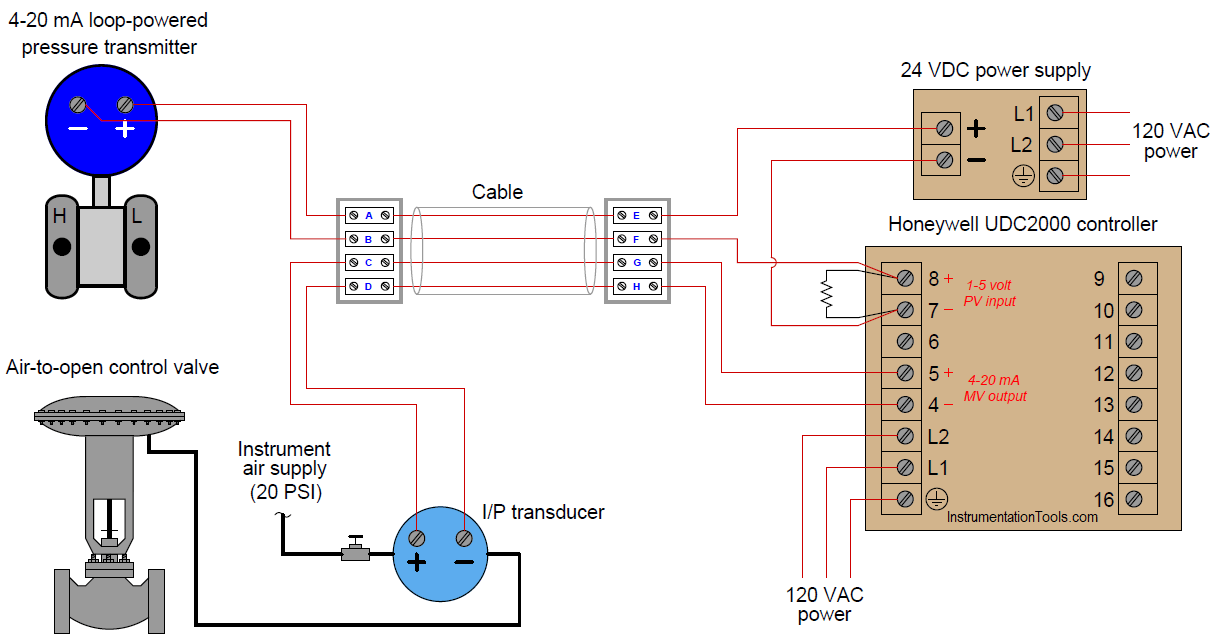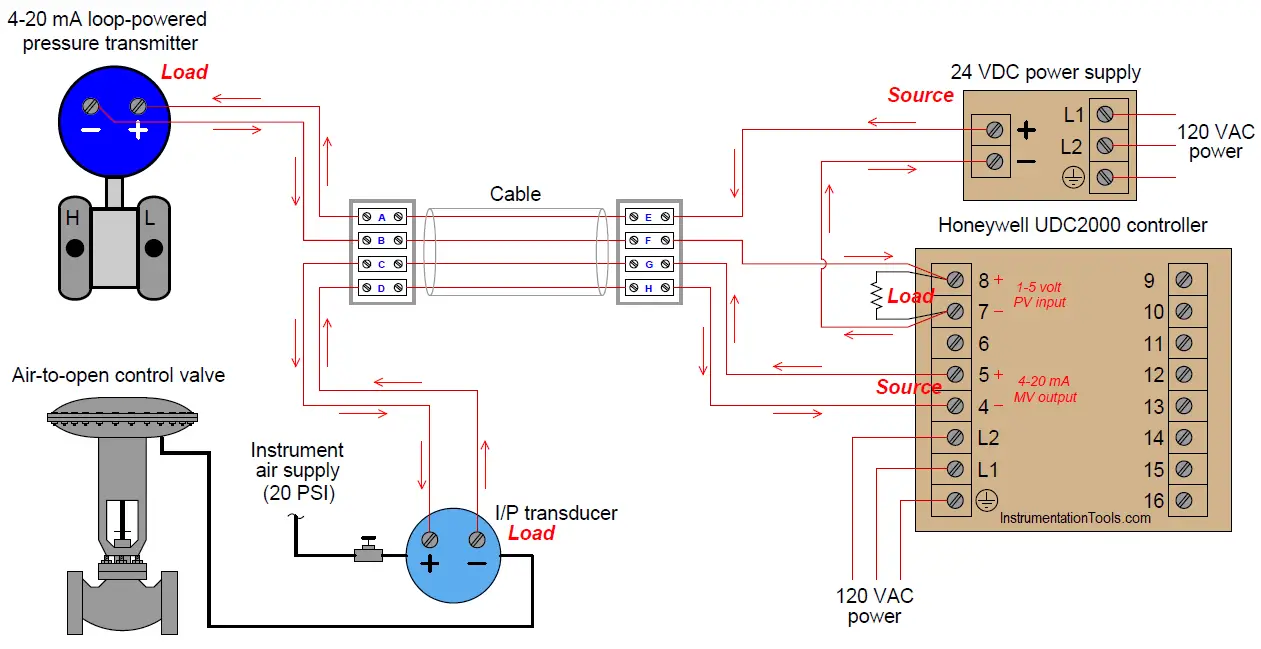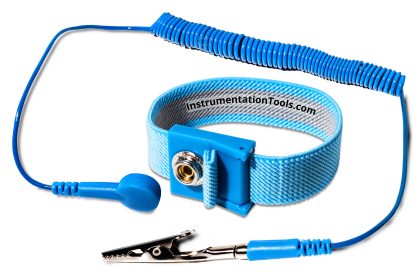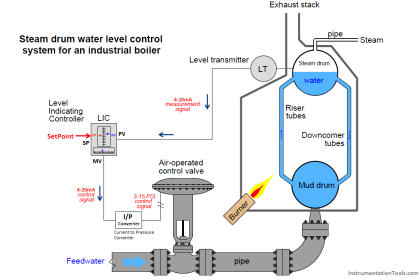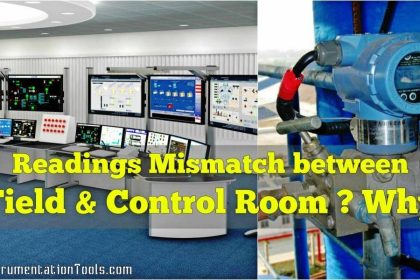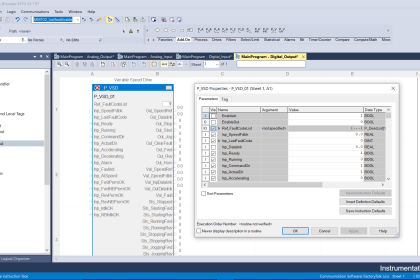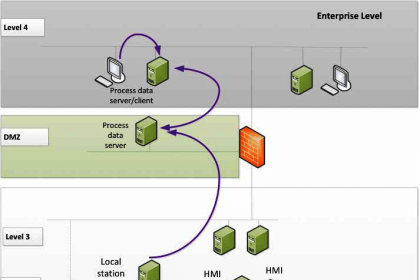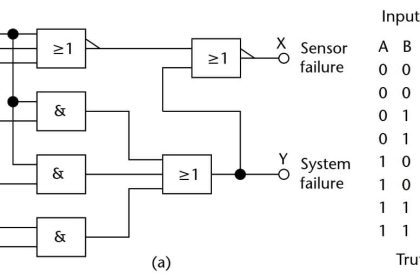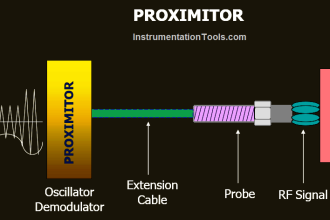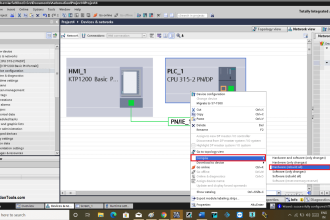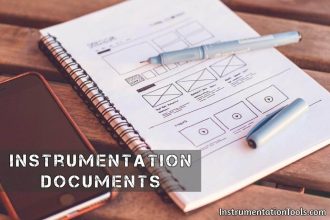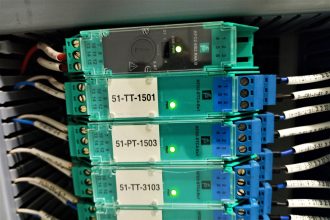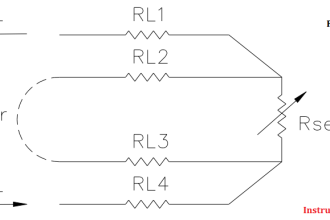This pictorial diagram shows the wiring connections for a simple pressure control loop, where a loop- powered 4-20 mA pressure transmitter sends a signal to a Honeywell controller, which in turn sends another 4-20 mA signal to a control valve:
Pressure Control Loop
Answer the following questions on the above shown pressure control loop.
Sketch all directions of current, using conventional flow notation.
Identify which electrical devices in this system act as sources and which act as loads.
If an operator informs you that the pressure indicated by the Honeywell controller is below range (“pegged” full downscale, reading −25%), what types and locations of electrical faults might you suspect? Are there any non-electrical faults which might also cause this to happen?
If an operator informs you that the control valve remains fully shut no matter the output value of the controller (even in “manual” mode), what types and locations of electrical faults might you suspect? Are there any non-electrical faults which might also cause this to happen?
Suppose that a short-circuit developed between the transmitter wires in the four-conductor cable. Explain what effect this would have on the operation of the system, as well as how you could determine that this fault was in the cable (and not in the transmitter) with your only piece of test equipment being a voltmeter.
Solution:
Even though the loop-powered transmitter does exert control over the amount of current sent to the controller’s input, the transmitter acts as a load rather than a source. In other words, it functions as a current regulator while relying on the 24 VDC power supply to be the source of motive power in the circuit.
Current Flow Direction in Pressure Control Loop
A full-downscale (−25%) reading at the controller suggests a 0 volt signal at the controller’s input terminals. This could be caused by an open fault in the transmitter wiring somewhere, because this correlates with a zero current signal. It could also be caused by a short across the 250 ohm resistor. The fault must be electrical in nature, as no other kind of problem will cause the controller to lose all signal.
An unresponsive control valve suggests a lack of air pressure reaching its diaphragm. This may be caused by any kind of electrical fault in the output circuit (open or short) preventing current from reaching the I/P transducer. It might also be the consequence of an air supply failure, or perhaps a mechanical failure inside the I/P.
A short-circuit fault in the transmitter wiring will cause full current (> 20 mA) to be sent to the controller, making it “peg” full upscale. Normally, an ammeter would be a helpful tool to isolate the location of this fault, but here we only have access to a voltmeter.
In order to locate shorted faults using a voltmeter, we must break the circuit and then measure voltage “upstream” (toward the source) to see whether or not the shorted fault is “downstream” (toward the load).
Credits: Tony R. Kuphaldt
Read Next:
- Live Zero in 4-20 mA Loop
- Why we Tune a PID Controller?
- 4-20 mA Formula
- Compare Fieldbus & 4-20 mA
- Control Loop Testing
